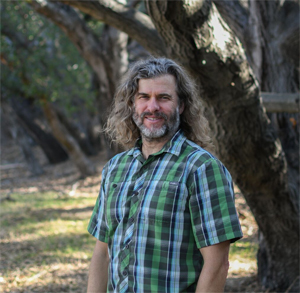Q&A with Assistant Professor Richard Cobb
 Assistant Professor Richard Cobb, whose research is focused on forest health, recently headed a collaboration of 20 researchers across 17 countries to further understand the vexing global concern of why more and more forests die.
Assistant Professor Richard Cobb, whose research is focused on forest health, recently headed a collaboration of 20 researchers across 17 countries to further understand the vexing global concern of why more and more forests die.
He will soon publish an updated estimate of tree mortality, tying the problem back to the drought and sudden oak death, a disease that has killed millions of trees since the mid-1990s and continues to do so.
Q: Why are trees dying at accelerated rates?
A: Tree mortality is a global issue, and in California we’re facing two distinct problems: drought and the bark beetle in the Sierra Nevada and sudden oak death in coastal forests. Both mortality events are increasing but for different reasons – mortality in the Sierra Nevada is tied to climate, while sudden oak death is caused by an ongoing pathogen invasion.
Q: How many trees have been impacted?
A: The numbers are mind-boggling large, about 130 million dead trees in the Sierra Nevada and about 50 million in the coastal range of California from sudden oak death.
Q: What are the long-term implications?
A: These problems are worsening. Sudden oak death is actively invading at-risk forests, and mortality will increase every year for the next few decades. In the Sierra Nevada, we’re seeing evidence of a second wave of tree mortality in higher elevation fir forests; I expect that mortality will get worse in the next five years.
Q: Does tree mortality affect wildfires?
A: Yes, but not always in the way you would expect. In the first few years after a tree has died, dead foliage in the canopy can greatly increase fire intensity. Once this material is on the ground, controlling fire becomes more manageable but impacts to soil increase, which can reduce carbon sequestration and water quality.
Q: What can be done to mitigate the impacts?
A: In many ways this is a self-inflicted problem. Decades of mismanagement set the stage for the severe mortality we’re seeing now. The thinning, burning and dead fuel removal we need to apply have not been widely adopted because they are expensive and will require decades of work. Our wildland ecosystems determine the quality of our air and water as well as represent many other economic opportunities. There is no question in my mind that investment in our forests is worth the effort and expense. Getting this work done will be the most important challenge for the next several generations of California natural resource professionals.
Visit the Cultivate Fall 2018 Page to read more stories.